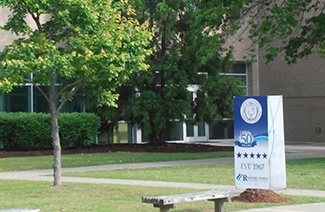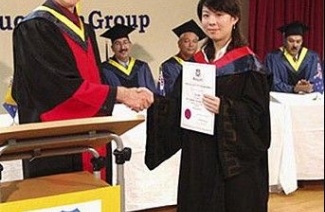36. Bufo marinus toads, fierce predators that will eat frogs, lizards, and even small birds, are native to South
America but were introduced into Florida during the 1930's in an attempt to control pests in the state's vast
sugarcane fields.
(A) are native to South America but were introduced into Florida during the 1930's in an attempt to control
(B) are native in South America but were introduced into Florida during the 1930's as attempts to control
(C) are natives of South America but were introduced into Florida during the 1930's in an attempt at
controlling
(D) had been native to South America but were introduced to Florida during the 1930's as an attempt at
controlling
(E) had been natives of South America but were introduced to Florida during the 1930's as attempts at
controlling
37. While some academicians believe that business ethics should be integrated into every business course,
others say that students will take ethics seriously only if it would be taught as a separately required course.
(A) only if it would be taught as a separately required course
(B) only if it is taught as a separate, required course
(C) if it is taught only as a course required separately
(D) if it was taught only as a separate and required course
(E) if it would only be taught as a required course, separately
38. Scientists have observed large concentrations of
heavy-metal deposits in the upper twenty centimeters of Baltic Sea sediments, which are consistent with the
growth of industrial activity there.
(A) Baltic Sea sediments, which are consistent with the growth of industrial activity there
(B) Baltic Sea sediments, where the growth of industrial activity is consistent with these findings
(C) Baltic Sea sediments, findings consistent with its growth of industrial activity
(D) sediments from the Baltic Sea, findings consistent with the growth of industrial activity in the area
(E) sediments from the Baltic Sea, consistent with the growth of industrial activity there
39. For members of the seventeenth-century Ashanti nation in Africa, animal-hide shields with wooden frames
were essential items of military equipment, a method to protect warriors against enemy arrows and spears.
(A) a method to protect
(B) as a method protecting
(C) protecting
(D) as a protection of
(E) to protect
40. In metalwork one advantage of adhesive-bonding over spot-welding is that the contact, and hence the
bonding, is effected continuously over a broad surface instead of a series of regularly spaced points with no
bonding in between.
(A) instead of
(B) as opposed to
(C) in contrast with
(D) rather than at
(E) as against being a
Answer to Question 36
Choice A is best. The phrasing are native to correctly suggests that the toad species is indigenous to, and still
exists in, South America. In B, native in is unidiomatic; in C and E, natives of illogically suggests that each toad
now in Florida hails from South America. In D and E, had been inaccurately implies that the toads are no longer
native, or indigenous, to South America, and introduced to Florida is unidiomatic. Both as attempts in B and E
and as an attempt in D are wrong because the attempt consists not of the toads themselves, but of their
introduction into the environment. The correct phrase, in an attempt, should be completed by an infinitive (here,
to control), as in A.
Answer to Question 37
Choice B is best: in sentences expressing a conditional result (x will happen ify happens), the verb of the main
clause should be in the future tense and the verb of the if clause should be in the present indicative. Thus, is
taught (in B) is consistent with will take, whereas would be taught (in A and E) and was taught (in D) are not.
For clarity, only in C, D, and E should immediately precede the entire;/clause that it is meant to modify. Also, the
intended meaning is distorted when the adverb separately is used to modify required, as in A and C, or taught,
as in E; B correctly uses the adjective separate to modify course.
Answer to Question 38
All of the choices but D contain ambiguities. In A and B the words which and where appear to refer to
sediments, and in E it is not clear what consistent describes. In A, C, and E, there is no logical place to which
there or its could refer. In D, the best choice, the phrase sediments from the Baltic Sea tells where the
sediments originate, findings provides a noun for consistent to modify, and in the area clearly identifies where
the industrial activity is growing.
Answer to Question 39
Choice C is best because the participle protecting begins a phrase that explains what the shields did. Choices A
and B awkwardly use the singular word method to refer to items of military equipment rather than to the use
of such items. Also, a method of protecting would be more idiomatic than a method to protect in A or a
method protecting in B. In B and D, as is incorrect; also, a protection in D has no noun for which it can
logically substitute. Choice E is incomplete; used to protect would have been acceptable.
Answer to Question 40
The corrected sentence must contrast an effect of spot-welding with an effect of adhesive-bonding. To do so
logically and grammatically, it must describe the effects in parallel terms. When inserted into the sentence, D
produces the parallel construction over a broad surface rather than at a series. Having no word such as over
or at indicate location, choices A, B, and C fail to complete the parallel and so illogically draw a contrast between
surface and series. In E, as against being is a wordy and unidiomatic way to establish the intended contrast.
Choice D is best.

















